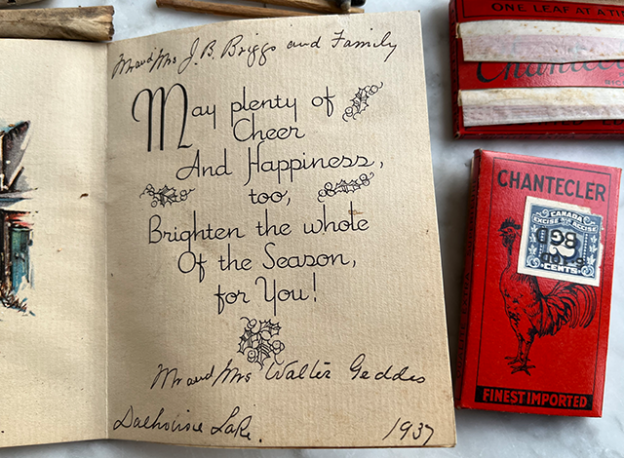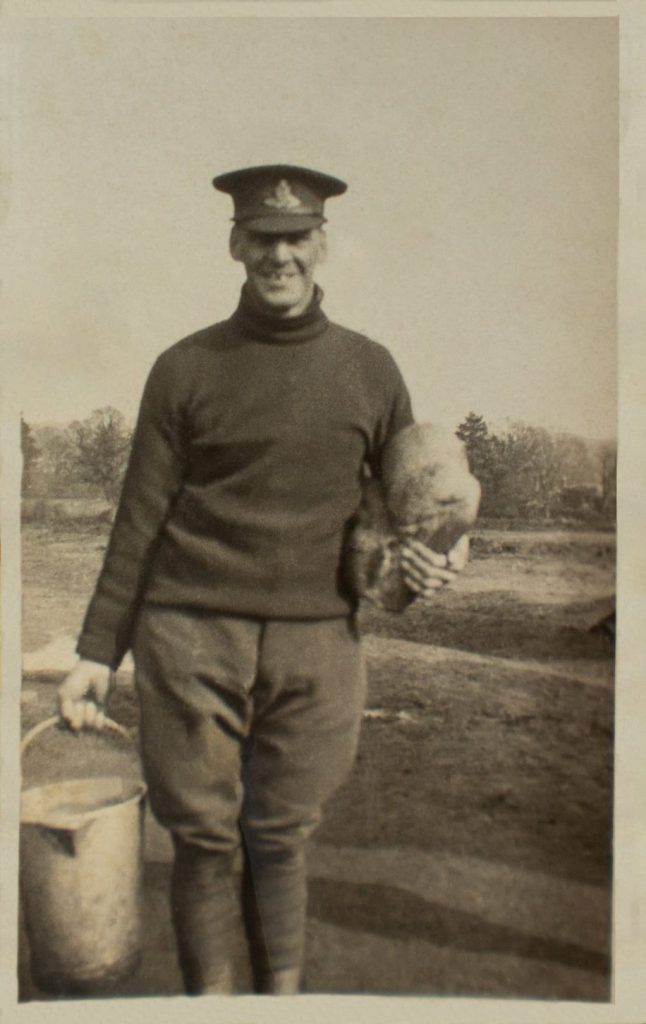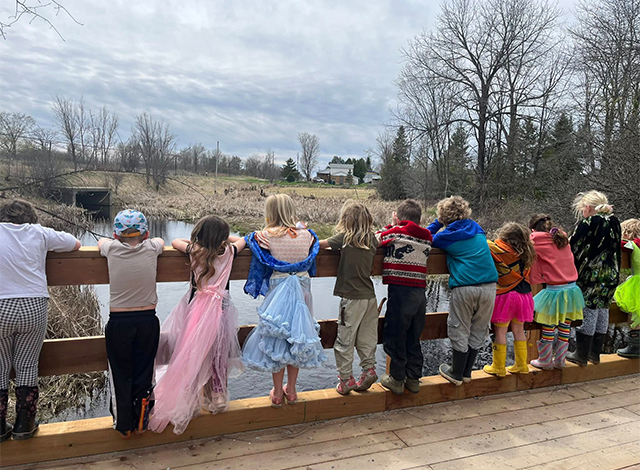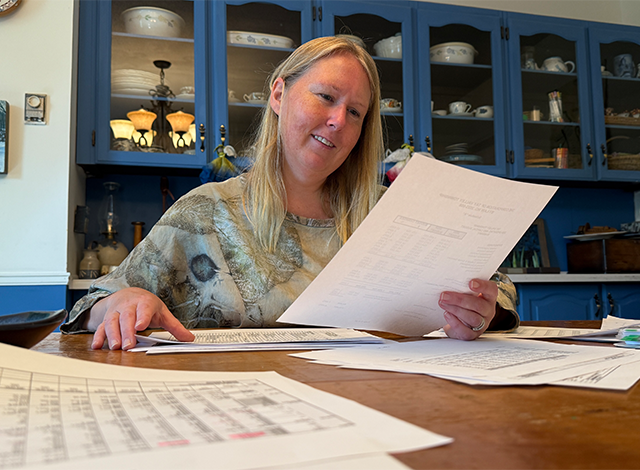On April 12, 1882, John Bourchier Briggs (1882-1938) was born into an affluent and influential family in St. Pancras, London. His father, William Edward Briggs (1847-1903) was a Liberal politician who sat in the House of Commons and regularly graced the pages of The Illustrated London News. William’s firm, J. and W. E. Briggs operated the Rose Hill Mill in Blackburn, England.
William and his wife Mary Ann Susannah Vicars (1847-1882) had five children. John was the youngest, followed by William Arthur (1879-1958), Margaret Isabel (1877-?), Mary Louise (1876-1859), and Ethel Maude (1873-1923). They all eventually relocated to Canada except for Ethel Maude, who remained in England. In 1906, following the death of his parents, twenty-four-year-old John Briggs boarded an ocean liner in London bound for New York.
Upon his arrival in Canada, John Briggs became one of the first Royal Canadian Navy personnel, and he served aboard the HMCS Niobe for over a year. The vessel returned to Halifax, Nova Scotia in 1915 and served as a depot ship. The 1917 Halifax Explosion, which was the largest man-made, nonnuclear explosion in history, damaged the ship so severely that it was broken up and sold for scrap in the 1920s.
John served in WWI, where he was wounded by shrapnel at Vimy Ridge on April 17, 1917. On September 19 of that same year, John boarded the HMHS Llandovery Castle in Liverpool and returned to Canada. Less than a year later, this Canadian hospital ship was torpedoed and sunk by a German U-boat. The horrific and controversial incident resulted in the submarine’s officers being charged with war crimes.
Following the war, 35-year-old Briggs married 25-year-old Alice Jane Peters (1893-1986). At the time, Alice was a law clerk and John had been appointed as Hydroelectric Operator with the Hydro-Electric Power Commission of Ontario. They were both Anglicans from England who arrived in Canada in 1906—he from London, and she from Yardley. They had three daughters: Joan Louise, Barbara Lucy, and Catherine. By 1921, the family had relocated to Dalhousie Township in Lanark, Ontario.
In 1928, John was promoted to Field Superintendent, and the family moved from High Falls to Smiths Falls. A historically significant address built by William Simpson and later owned by Jason Gould became their home. The Briggs family embraced their new life in Smiths Falls and were active members of the St. John’s Anglican Church. John became a member of the Tennis Section of the Canadian Pacific Recreation Club. He held various executive offices in town and was a strong supporter of the Chamber of Commerce. In 1933 the Briggs moved up Brockville Street into the Keyhole House, for which they paid $6,500.
1938 was a year of massive change for the Briggs family. 18-year-old Joan married. John died suddenly on the afternoon of Saturday, June 25, 1938, at the age of fifty-six—at the family home at 182 Brockville Street. His death certificate indicates that the immediate cause of death was coronary sclerosis, and that delirium was a contributing factor. The funeral ceremony began at the Keyhole House, continued to St. John’s Anglican Church, and concluded with a burial at Hillcrest Cemetery. Alice sold the Briggs family home to Carrie and Harry Buchanan for $2,700. This amount was less than half of what she and John had paid for it five years earlier.
When Alice died on January 17, 1986, at the age of 93, she was cremated. Her ashes are buried beside her husband John at Hillcrest Cemetery. Their unmarked graves are sheltered beneath a large, magnificent pine tree. Joan’s marriage to William “Bill” Spinelli on February 25, 1938, lasted only a few years. She relocated to Sudbury where she died in 2002, at the age of 82. Barbara married Jan Backer Ulrichsen from Norway, and they had a son and a daughter together. No information about Catherine has surfaced.
During restoration efforts at the Keyhole House, several artifacts belonging to the Briggs family have been uncovered. Two packages of Chantecler “Pure rice paper” rolling paper were discovered behind the fireplace mantel, along with unfiltered cigarette butts. This brand was produced by the Imperial Tobacco Company of Canada with imported paper. They bear two cent Canada Revenue Three Leaf Excise Tax stamps from 1934. Since John Briggs owned the house at the time, it is suspected that he was the owner of these artifacts.
A Christmas card from Mr. and Mrs. Walter Geddes of Dalhousie Lake was also found in the same location. It was addressed to Mr. and Mrs. J. B. Briggs and family, dated 1937. Walter Geddes was one of six Hydro employees of the Eastern Division who were pallbearers at John’s funeral. Also found next to the Briggs Christmas card and rolling paper was a brittle, curled black and white photograph of a soldier. The jodhpurs and puttees are consistent with a WWI uniform. The artillery cap badge is similar to those worn by soldiers in John Briggs’ original 49th Overseas Depot Battery C.F.A. The soldier in the photo is missing an upper front tooth. John Briggs’s dental certificate from the Military Convalescent Hospital in Surrey indicates that he had “… a number of teeth missing both upper and lower.” All the evidence points in one direction…
It is an honour to meet you, Sergeant John Briggs!
Ted & Marion Outerbridge are currently restoring a Smiths Falls heritage home built in 1893. They are also being swept away by local history & mystery. You can follow them on Instagram, Facebook, and TikTok @thekeyholehouse or email ted@tedouterbridge.com.
















